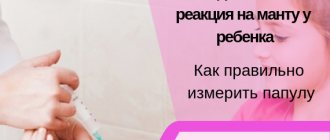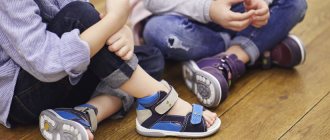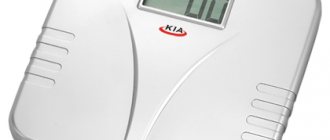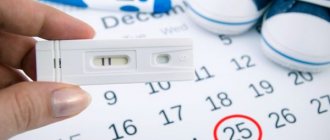The importance of measuring head circumference in children
The circumference of a child’s head, which differs from the norm, may indicate any health problems.
The diameter of the baby's skull is the most important indicator indicating the state of his health. By the way this parameter changes, you can understand how much the brain is developing, how the circulation of cerebral fluid occurs.
At 3-4 weeks after birth, the baby’s head takes on a rounded shape. Its size is significantly affected by:
- whether the baby was born on time (full or premature pregnancy);
- height and weight;
- natural characteristics of the body;
- hereditary factor;
- nationality.
If development proceeds without pathologies, the diameter of the skull does not exceed the girth of the chest. Only by 3-4 years are these parameters compared. In infancy, chest volume always exceeds head circumference in children. The optimal values for skull circumference are 29-34 cm. If measuring head circumference gives results that deviate from the norm, the cause may be hidden in a serious illness.
Should norms be taken literally?
The weight and height of an infant are influenced by various factors, among which the most significant are the type and frequency of feeding, problems with milk in the mother or an allergic reaction to formula, prematurity, heredity, environmental factors and various diseases.
If the indicators differ moderately from the norm in any direction, this is not dangerous, but it can affect the child’s health, for example, the baby will take longer to recover than children with a normal weight. In case of severe deviations, both parents and doctors should direct their efforts to identify their causes.
WHO notes that more than half of early deaths are associated with a significant deviation of the child’s body weight from normal values. As for large deviations in growth indicators, they threaten problems with the child’s musculoskeletal system.
The main reasons for deviations from standard indicators
A decrease in skull volume may indicate microcephaly
Immediately after birth, the doctor measures the volume of the baby's skull and chest. Minor deviations do not cause alarm. For example, in large babies, the diameter of the skull may exceed the upper values indicated in the table. If heredity and individual characteristics of the body are excluded, and the numbers differ greatly from normal, the child may be diagnosed with:
- Hydrocephalus (water on the brain). It is characterized by the accumulation of fluid in the cranial cavity, causing increased intracranial pressure, nausea, refusal to eat, neuralgic disorders, and pathological growth of cranial bones.
- Microcephaly. Occurs in babies whose brain growth has stopped. In this case, the shape of the skull has distorted outlines. The disease affects the central nervous system and provokes mental and neurological abnormalities.
Both pathologies require strict supervision by a neurologist and serious treatment.
What data are the tables and graphs based on?
Until 1997, WHO standards simply recorded the growth parameters of children. However, most of the tables were created based on statistics on bottle-fed children. Now all the standards have been revised and are based on the indicators of breastfed children. Standards show how children should grow and help determine whether interventions are needed to improve a child's growth and healthy development.
The development of the current standards was carried out in the interests of the health of children around the world. Comparing the child’s physical development indicators with these standards helps medical workers timely identify excessive or insufficient weight gain and other indicators.
Measuring head circumference in children
A pediatrician takes head measurements for infants and then enters the data into the medical record.
In the first months of life, the size of the skull in infants changes rapidly. Parents can measure the volume of their baby's head at home using a centimeter tape. Algorithm for taking measurements:
- the baby is placed on a table or bed (if he can sit independently, he is seated in a highchair);
- the measuring tape is applied so that it lies above the ears along the widest occipital region;
- the starting point of the meter is connected to the ending point in the area above the eyebrow arches;
- the resulting numbers are recorded and compared with the norm.
For measurements to be truthful, they must be carried out monthly using the same tape. There is no need to squeeze the baby's head. If he is capricious and worried, it is better to postpone the procedure and measure the girth when the baby is in a good mood.
Comparison of the obtained figures with the size of children's hats
When buying a hat online or on the market without accurate information about the volume of the baby’s head, you must:
- Remember what size of headdress (bonnet, hat, panama hat) was purchased last time and how much time has passed since that moment. From birth, the head of newborns increases by 2 cm every month, from 3 to 12 months - by 1 cm.
- Check the dimensions of the cap or helmet model with the manufacturers' sizing chart. They come in domestic, European, English and American standards.
- If the headdress turns out to be tight, there is no need to put it on the child. The fabric tightens the skin, interferes with normal blood circulation, negatively affecting health. It is better to leave a loose model, bought 2 sizes larger, for the next season, as it can slide down your face, making it difficult to breathe.
The tables present the average head circumference for children under 5 years of age. Don't be alarmed if it doesn't match the actual numbers a little. If the indicators are very different, you need to consult a pediatrician and undergo an examination.
LiveInternetLiveInternet
—Categories
- Kanzashi (11)
- Dolls in stocking technique (10)
- Cold porcelain (3)
- Beads (3)
- Combination(knitting+fabric) (1)
- Personal (ramblings of a madwoman) (1)
- Patchwork without needle (1)
- Embroidery (5)
- Knitting (442)
- for boy (7)
- Boys (5)
- fork, broomsting (4)
- Irish lace (2)
- hook (124)
- knitting needles (142)
- PATTERNS (87)
- knitting lessons (29)
- Decoupage (2)
- Children's (175)
- to help mom (51)
- ideas for children's creativity (7)
- for children's (2)
- toys (10)
- For two (7)
- For the diary (16)
- Health (14)
- Interesting (68)
- Cooking (12)
- baked goods (2)
- Decoration (62)
- Congratulations (4)
- Orthodoxy (2)
- Beauty salon (19)
- Scrapbook (20)
- Poems (12)
- Photoshop (8)
- Sewing (61)
- Esoterics (4)
- Humor (13)
—Applications
- Postcards
Reborn catalog of postcards for all occasions - I am a photographer
Plugin for publishing photos in the user's diary. Minimum system requirements: Internet Explorer 6, Fire Fox 1.5, Opera 9.5, Safari 3.1.1 with JavaScript enabled. Maybe it will work - TV program
TV programs - Wall Wall
: mini-guest book, allows visitors to your diary to leave messages for you. In order for messages to appear on your profile, you need to go to your wall and click the “Update” button - Funny quotes and ICQ statuses
Funny quotes and ICQ statuses from the social quote book basher.ru
—Quote book
Overalls for a baby.
The stork flew in (cross stitch). https://vyshivka.mirtesen.ru/ Schemes by clicking to enlarge.
Crocheted flower Crocheted flower.
PATTERN WITH SPOKES pattern with knitting needles 573 Pattern diagram: The diagram shows only the front rows, .
Choosing a headdress for a child, taking into account the markings
It is advisable to purchase beanies, winter hats, caps, and panama hats for children by trying them on. But if you can’t take your baby to the store, then you need to rely on the tabulated age parameters and correlate them with the information indicated on the product label. When choosing a children's headdress, you should:
- Read the label on the hat, which indicates the size corresponding to the diameter of the head.
- If the size is 1 cm smaller than required, it is better to purchase a product with a larger diameter so that it does not turn out to be small.
- Please note that the double size on the label means that the fabric stretches easily and is suitable for several ages. So a baby can wear a cap made of flannel or calico for 1-2 months.
- Winter hats must fit the forehead height and depth, so it is better to try them on.
If you plan to knit a light hat, scarf, cap with knitting needles or crochet, use recently taken measurements. If the manufacturing process drags on for a month, the length and width are increased by 1-2 cm. In addition to the size, when buying a headdress for a baby, be sure to take into account:
- Material. Winter models should be made of high-quality materials and fit tightly to the head so as not to allow cold air to pass through. The most suitable are wool, raincoat fabric, fur with a fleece or cotton lining. Summer panama hats, caps, and scarves are made from linen and cotton fabrics.
- Style. For cool weather, choose helmets, ear flaps, and hats with ties. In the summer heat, suitable options are bandanas, caps, and panama hats.
- Form. If the hat has a wide knit trim for a snug fit or has drawstrings, you may want to purchase a slightly larger piece.
Children's hat size charts start from 0 month (36-38 cm) and end at the age of 12 years (56-58 cm). From the age of 13-14, teenagers can choose adult models.
The child needs to choose a headdress so that it does not slide down over the eyes or put pressure on the ears and forehead. This is especially important for newborns, who mostly lie down, and for actively growing babies.
Men's hats
Men's hats have always been popular. They give men a certain style and elegance. This has become especially popular in our time.
Finding a headdress model that matches the color and shape is not difficult. Many online stores sell hats. The only difficulty that buyers face is choosing the appropriate size of men's hats.
In order not to overshadow your own purchase, use the correspondence tables. They contain the necessary designations for purchase in the USA, Europe and Russia. We will look at them in more detail below.
Features of determining adult sizes
Head measurements when selecting a helmet
It doesn’t hurt for adults to determine their head size before purchasing a hat. Its size is equal to the circumference of the skull. You can take measurements with a tailor's centimeter, thread, paper tape and other measuring objects at hand (then they are laid out on a ruler to measure the length). The procedure is carried out as follows:
- sit on a chair, keeping your back straight;
- pull the tape around the head;
- make sure that it touches all the convexities of the skull and runs clearly along the occipital region, without falling on the neck or rising to the crown of the head;
- When taking measurements, the hair is let down;
- the line of the measuring tape should go just above the line of the ears;
- the two ends of the tape should cross 1.5-2 cm above the eyebrow arches, touching one of the divisions.
The number shown on the division means the girth and indicates the size of the hat according to domestic standards. If it is 60 cm, then the size on the label will be 60.
If the product is knitted or sewn by hand for a specific person, it is necessary to make a pattern after individual fitting. The landing depth must be calculated - this is the distance from the frontal part to the back of the head. In the forehead area, determine the point over which the headdress will be pulled, and stretch a measuring tape along the top of the skull to the occipital protrusion. These figures in adults range from 24-26.5 cm.
It is also necessary to know the distance from temple to temple. The tape is pulled from the left temple to the right along the back of the head. For adults, this distance is 25.5-26.5 cm. This measurement is taken when sewing hats that are pulled over the head. When creating a pattern, subtract 0.5-1.5 cm from the resulting numbers - this way the knitted hat will not slide onto the forehead.
Subtleties of choosing a headdress for adults
Hats with chunky knits stretch more.
It is much easier for an adult to choose a hat than for a baby. In the lines of many manufacturers you can find dimensionless models. Some of them are positioned as unisex (for women and men). However, head circumference is not an empty value. Oversized products may be large for some people, but small for others.
When purchasing a headdress, you should consider the following points:
- Synthetic products stretch quickly, and natural fur hats (for example, ear flaps) shrink in size after washing.
- An item with a large knit becomes loose faster than an item made of dense fabrics.
- You can buy a slightly larger hat for autumn or spring, but winter ones should fit close to the body to provide warmth to the ears and comfort to the skin.
- If the pattern on the hat is convex and large, you need to purchase a spacious product so that the pattern does not stretch or become distorted.
- If a woman has thick hair and likes to wear her hair full, it’s worth choosing more voluminous models.
- Despite the correct measurements taken and compliance with the data in the table, before purchasing you should try on the clothing to understand how well it suits the shape of your face, eye and skin color.
An unsuitable headdress causes discomfort when worn, spoils the image, giving a respectable adult a comical, ridiculous look. And, conversely, a perfectly selected hat, cap, cap will become not just an accessory, but an integral part of the image.
Oversized caps, headwear with a fastener, have an adjuster at the back. Their sizes range from 55 to 61.
Choosing a helmet for an adult and a child
Helmet sizes based on head volume
A helmet is a reliable head protection against various injuries and concussions. It is extremely important to select it exactly in size using a special table. When trying on, you should adhere to certain rules:
- The helmet should not be tight. If it loosens, you need to take a larger size.
- The top of the product should touch the top of the head. If this is not the case, and you feel pain and pressure in the ear area, the size is not suitable.
- When trying on a motorcycle, hockey, or bicycle helmet, you need to fasten the strap and then pull it to the sides. The inner surface of the product should pull the skin and not dangle freely.
- When the helmet is secured to your head, you need to grab it by the back and try to remove it. Then try to remove it from the front side by pulling it up. If attempts are unsuccessful, the size is selected correctly.
To find out the size of a motorcycle helmet, you need to measure the girth and circumference of your head. The tape should run across the widest part of the skull, covering the highest point on the back of the head. There should be several measurements to avoid mistakes. The resulting figure is compared with the helmet table, where the smallest girth of 51 cm is equivalent to size XXS (19 5/-20 1/8 inches). The largest size XXXXXL corresponds to 69-70 cm (27-27 ½ inches).
It is advisable to entrust the procedure of taking measurements to a stranger. If you have to measure your girth yourself, it is better to do it several times to achieve maximum accuracy of the results.
The parameters of a children's helmet are determined in the same way as for an adult's. After taking measurements, the data is consistent with the table, where the head circumference of 49-50 cm corresponds to the marking S. The largest XL is 54-55 cm.










